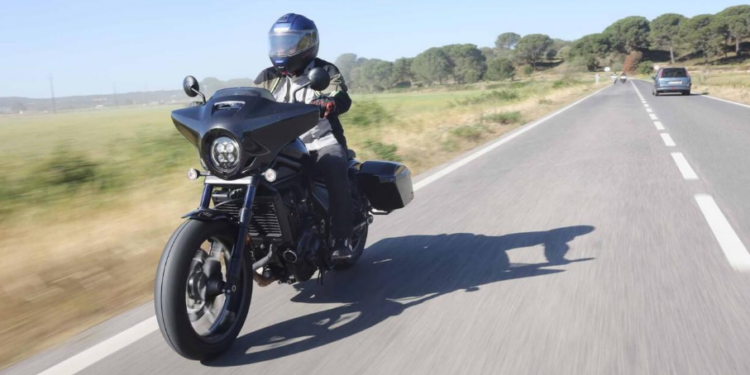The Rebel 1100 has a new T version, more dedicated to tourism, and it was one of the motorcycles we used on our recent trip from Lisbon to Porto, through the interior of Portugal, riding the Honda 1100 models. Now let’s specifically talk about this version, which externally goes somewhat unnoticed, hiding very interesting dynamic capabilities for a motorcycle in this segment.
It is no secret that the custom segment used to be much stronger among Japanese manufacturers. The names Virago, Intruder, Vulcan or Shadow (the latter dedicated to Honda models) will forever remain in the minds of many. But despite the extinction of many famous motorcycles from the past, this segment may be much more alive than it seems. This is because American brands continue to thrive in this category of motorcycles, making many new 125 cc motorcycle riders dream precisely of custom models! And we all know how successful this segment has been, especially through some Keeway models. Moving up in displacement, many riders have then opted for Japanese custom motorcycles of the “new generation,” such as the Kawasaki Vulcan and Honda Rebel 500, which end up being very versatile utility cruisers. But everyone dreams of a higher displacement.
CIVILIZED REBEL
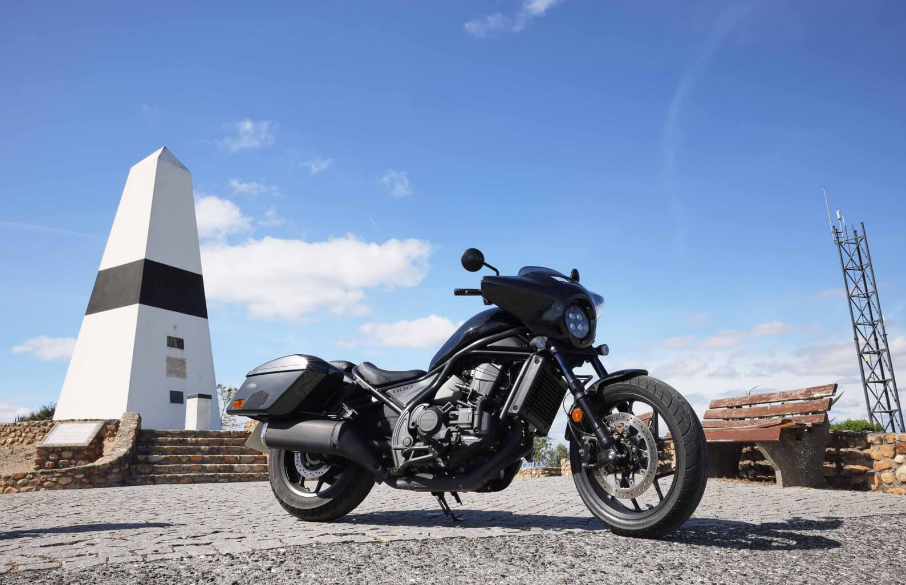
The twin-cylinder CMX 500 Rebel, compatible with the A2 license and launched in 2017, has gained considerable popularity, thanks in large part to its bobber style and ease of riding, being an excellent city bike unlike other customs from the past. That is why it is one of the best-selling customs in Europe, while the CMX Rebel 1100, which appeared in 2021, brought superior performance and a series of more advanced technologies. For this year, the model has not received any changes (only a new color), but it has been completed with a Touring version. Aesthetically, it stands out for the installation of a short front fairing and the installation of two rigid side cases (35 liters of total capacity), which can be complemented, like the base version, with a series of accessories. Both versions can be purchased with DCT, the famous dual-clutch transmission that we will talk about in more detail soon.
These two 1100T Rebels come equipped with a parallel twin-cylinder 1,084cc engine, with HSTC traction control system as standard, cruise control, as well as 3 driving modes plus a customizable User mode, therefore the TBW electronic throttle. In terms of chassis, highlights include the use of a tubular steel frame, a 43mm cartridge-type front fork, and piggyback rear shocks, with preload adjustment on both axles. The main features of this Rebel T also reveal a disc brake on each axle, with a radial 4-piston caliper on the front, and the use of a beautiful LED headlight, with instrumentation consisting of an LCD unit with a negative screen. Other interesting numbers relate to the seat height, which is set at only 700mm from the ground, and the weight of the assembly, which is 248 kg in running order, plus 15 kg compared to the version with a traditional gearbox. The fuel tank is not particularly large, holding only 13.6 liters of gasoline, and another characteristic revealing the cruiser format is the size of the wheels, as we find an 18-inch wheel at the front and a 16” wheel at the rear.
DIFFERENT FROM THE OTHER 1100s
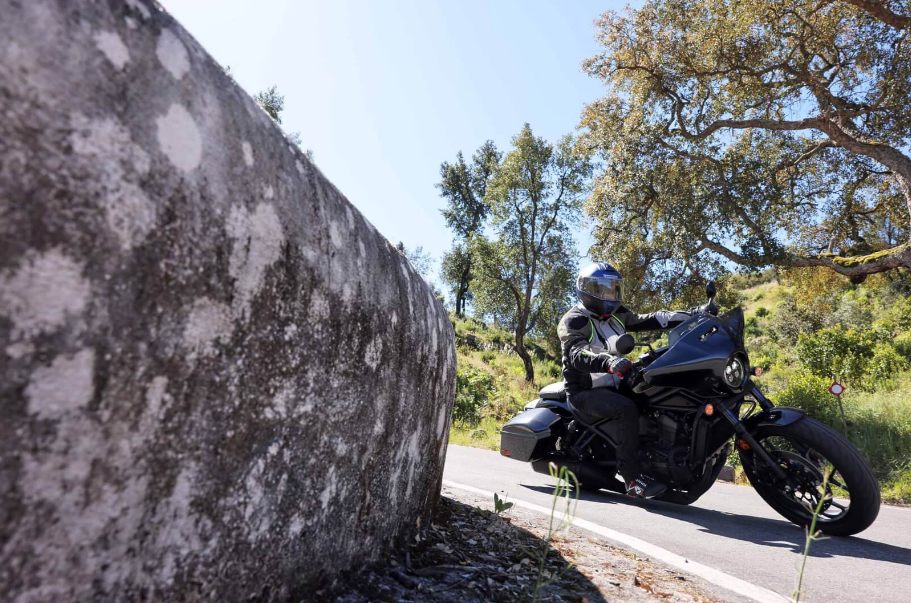
Being a cruiser with bobber characteristics, this 1100T Rebel features a slightly modified engine compared to the twin-cylinder of the NT 1100 and Africa Twin sisters. The power slightly decreases to 64 Kw at 7,000 rpm, but the torque is almost unchanged and appears earlier, with a peak of 98 Nm obtained at 4,750 rpm, changes achieved through different valve tuning and work done on the intake and exhaust, compared to the engine of the Africa Twin that originated it. It should be added that the Street and Tour accessory packages are available, as well as various individual items that can improve the aesthetics and comfort of the model. It is clear that the chassis and ergonomics of the assembly are quite different from the NT and Africa Twin, but it is best to move on to the driving impressions, especially since this Rebel is very good to ride!
STRAIGHTS… AND CURVES!
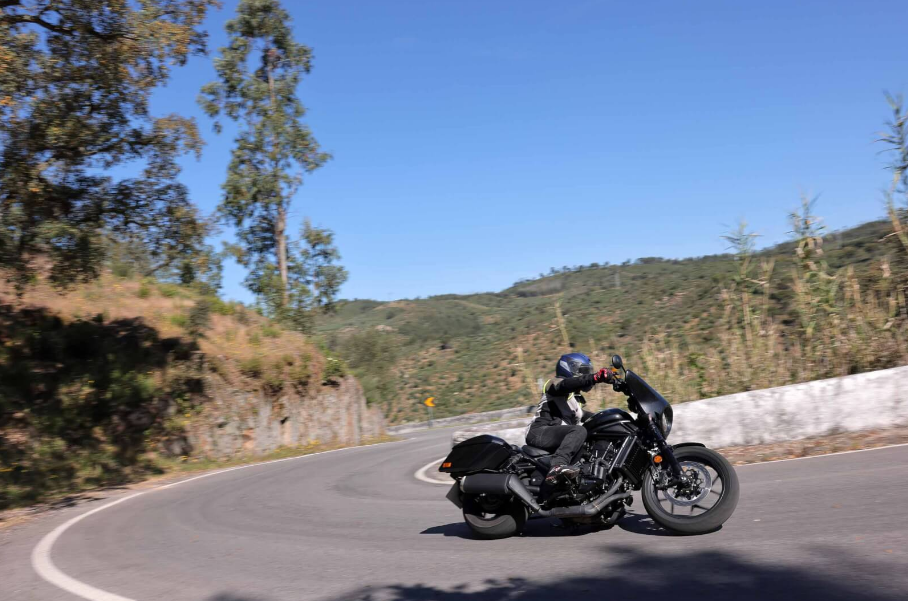
And it’s a good thing that it’s (very) enjoyable to ride, since in terms of aesthetics this Rebel seems too sober to us. Of course, there are tastes for everything, and many may love the lines of this T version, with its short windshield and prominent side bags, but it’s in the ride that this bike stands out.
This contact of ours was, in a way, a small journey of a few hours, between Lisbon and Vila de Rei, in the center of the country, but through a route well suited for this bike, with national roads and plenty of straight stretches through the interior of the country. The riding position is pleasant, especially because the feet are not too far forward, and fatigue will only appear in these situations: at higher speeds on the highway, on rough roads when the rear suspension with limited travel can no longer filter the irregularities, or after several hours of riding. This is because the seat is very low, so the legs are very bent and the hips may start to complain (at least those of a driver who likes to complain…)
The most important thing to highlight is that this engine is like a fish in water in this model: it has character and is strong in all rev ranges, but at the same time it is smooth and practically does not vibrate, so overall it does everything better than the big V engines in this segment. And furthermore, the DCT is an excellent ally, not needing to have various levels to choose from because it adapts by itself to each of the riding modes. In addition to managing the gear shifts of the DCT differently, each mode also interferes with power delivery, engine braking, and traction control, all of which have 3 levels of operation. Overall, the Standard mode is always the best, with the Sport mode proving to be too abrupt in many situations.
GOOD SENSATIONS
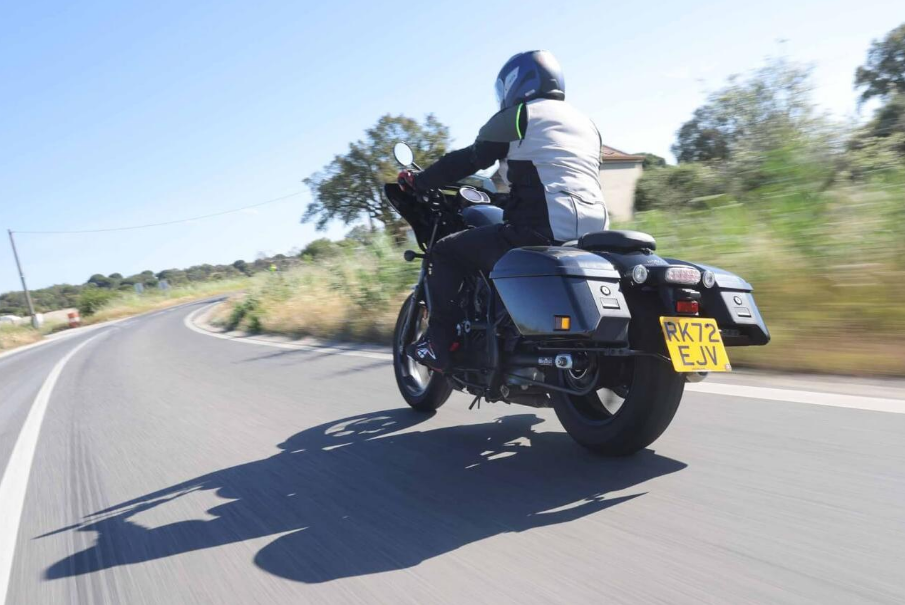
The smooth roads with good pavement are therefore the most suitable for this Rebel, but in curved areas we can see how the dynamics are very good! The suspensions work very well, even the two rear Showa ones as long as there are not too many potholes, the braking doesn’t fail at all and even the ground clearance is quite acceptable, for beautiful curves until finally the foot pegs start touching the ground, with the Rebel demanding only some “work” in the tighter curves. We liked the feel of all the controls, the overall build quality, and the easy readability of the instrument panel, and we were even surprised (positively) by the fact that the small windshield can divert the air from our helmet so well, almost like magic!
The side cases end up being shallow, especially the right one because of the exhaust, but they are very useful and more functional than traditional side bags, and we only didn’t test the passenger seat which, as can be easily observed, is quite small as “required” by the cruiser segment.
We covered about 240 kilometers with an average of around 5.5 l/100 km, a fair value for the “quick ride” we took.
We had a lot of fun with this Rebel, more than we expected, and while it is true that the riding position will never please everyone, we are fully convinced that this 1100T does everything very well, within the purposes it was designed for. And this engine with DCT fits so well that we immediately imagine a naked 1100 with this engine; a mix between the NT and this Rebel, is someone working on that in Japan?
Returning to this Rebel and just to conclude, it surprised us with its excellent dynamics, overall quality, and aerodynamic protection. For solo traveling, at a calm (or even fast) pace, it is very good, and even without having an exuberant aesthetic, we can say that it has a lot of style. Ultimately, it hasn’t even been two months and we already miss this 1100T Rebel.
HONDA CMX 1100T REBEL DCT
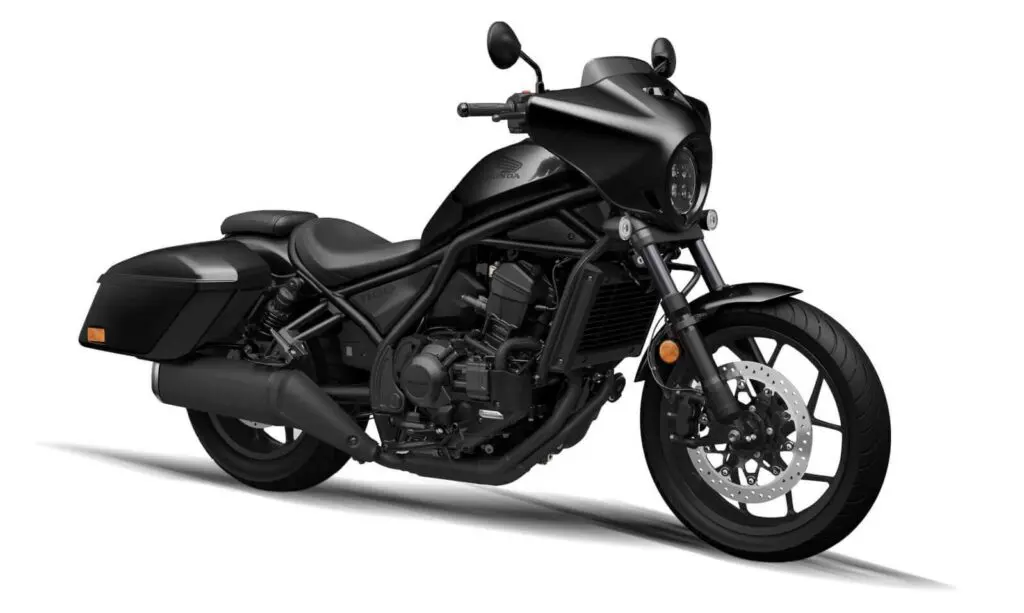
PARALLEL twin-cylinder, liquid-cooled ENGINE
DISPLACEMENT 1,084 cc
POWER 64 kW @ 7,000 rpm
BINARY 98 Nm @ 4,750 rpm
6-speed gearbox, dual clutch
STEEL FRAME, diamond type
TANK 13.6 liters
FRONT SUSPENSION 43 mm fork, pre-load adjustment, 140 mm travel
REAR SUSPENSION two piggyback shock absorbers, pre-load adjustment, 95 mm travel
FRONT BRAKE 330 mm disc, 4-piston monobloc radial caliper
REAR BRAKE 256 mm disc, 1-piston caliper
FRONT TIRE 130/70B18
REAR TIRE 180/65B16
WHEELBASE 1,520 mm
SEAT HEIGHT 700 mm
WEIGHT 233 kg
MSRP 13,250 € (12,250 € without DCT)

